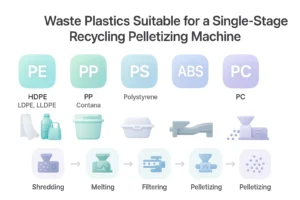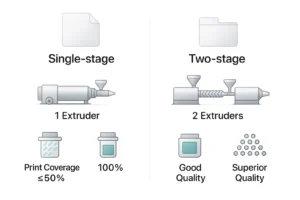Types of Waste Plastics Suitable for Single-Stage Recycling Pelletizing Machines
Single-stage recycling pelletizing machines efficiently convert waste plastics like PE, PP, and more into reusable pellets. This guide covers the types of plastics, input forms, and application scenarios suitable for these systems.


